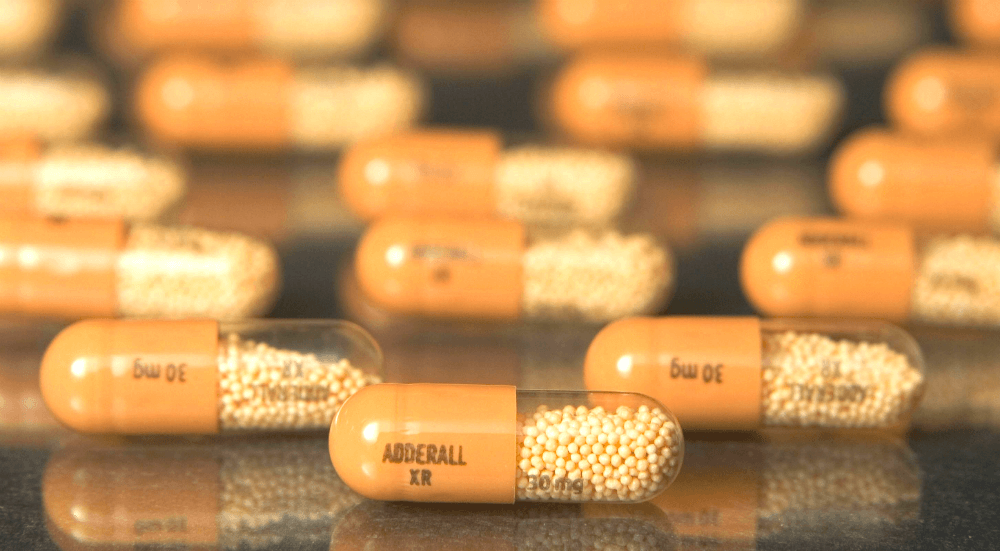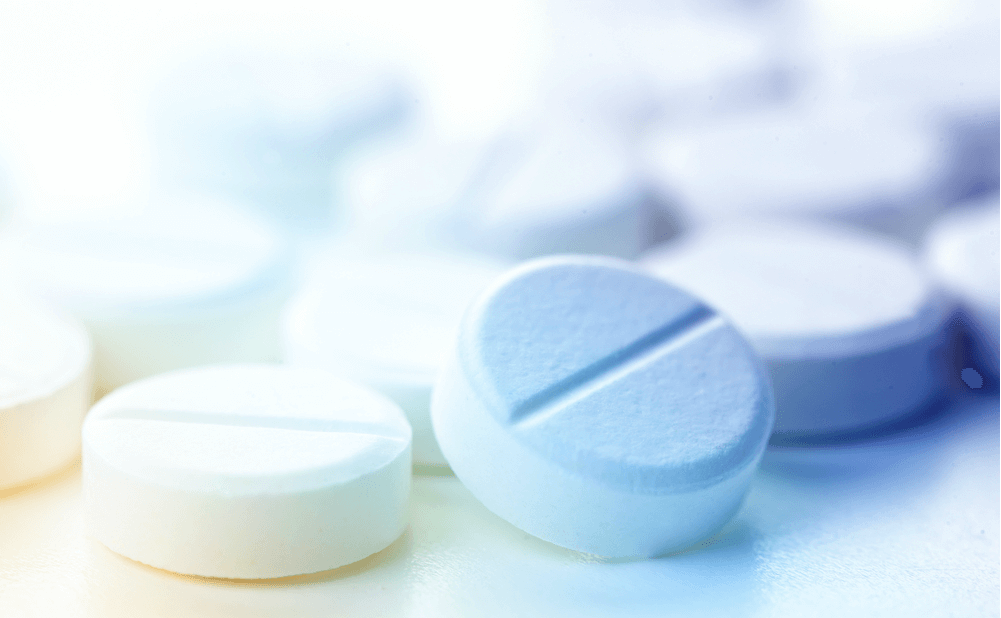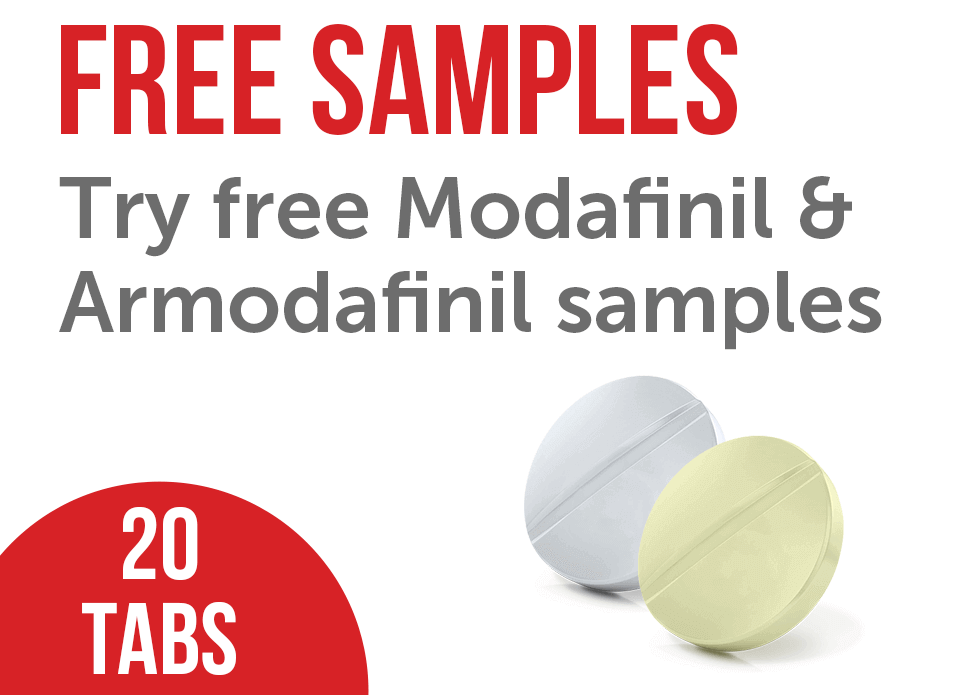On October 12, 2022, the US FDA officially broadcasted a national shortage of the immediate-release formulation of amphetamine mixed salts (Adderall or Adderall IR) on its drug shortage website. Why is there an Adderall shortage, and when will it end? When can the reason for the shortage be resolved? The FDA officially declares an Adderall shortage, with Teva Pharmaceuticals, a major manufacturer, reporting ongoing manufacturing delays. This nationwide scarcity has forced patients to search for alternatives and where to get them, especially extended-release substitutes. Thinking of what to do if you’re struggling to find your prescription during this time of dwindling supply?
Well, this guide delves into the reasons behind the shortage, explores the actions taken by the FDA to alleviate the problem, and the best substitute, plus practical advice for individuals encountering challenges in accessing their prescribed medication. Let’s dive in.
What Is Adderall?
Adderall is a prescription med used to treat attention deficit hyperactivity disorder (ADHD) and narcolepsy. It is a brand-name med that contains a combination of two active ingredients: amphetamine and dextroamphetamine. These stimulant meds are classified as central nervous system (CNS) stimulants and are comprehended for their effects on neurotransmitters in the brain, particularly dopamine and norepinephrine.
Adderall works by improving the levels of certain neurotransmitters in the brain, predominantly dopamine and norepinephrine. Dopamine is associated with pleasure and reward. This increase in dopamine levels helps improve motivation, attention, and the ability to focus on tasks. Norepinephrine is involved in the body’s “fight or flight” response. By increasing norepinephrine levels, Adderall can enhance alertness, concentration, and wakefulness.
Certainly, Adderall is primarily prescribed for individuals with ADHD, a neurodevelopmental disorder characterized by symptoms such as inattention, hyperactivity, and impulsivity. Adderall helps lessen these symptoms and improves the capability to concentrate and complete tasks. Further, the med is also used to manage narcolepsy, a sleep disorder characterized by excessive daytime sleepiness and sudden, uncontrollable episodes of falling asleep. The stimulant properties of Adderall aid individuals with this condition to stay awake during the day.
Adderall is available in various formulations, including immediate-release (IR) and extended-release (XR) versions. These different formulations have distinct characteristics:
- Immediate-Release (IR): IR Adderall tablets contain the IR forms of dextroamphetamine and amphetamine salts. How long does this med last? It typically lasts for about 4-6 hours and can be taken multiple times a day; usually taken 2-3 times daily, 4 to 6 hours apart, with or without food. They provide a rapid onset of effects (around 45 minutes);
- Extended-Release (XR): Adderall XR is a combination of neutral sulfate salts of dextroamphetamine and amphetamine. It’s designed to provide a longer-lasting effect, typically lasting 10-12 hours. It’s taken once a day, making it more convenient for individuals who require consistent symptom control. It is typically ingested in the morning, with or without food. It’s advisable to avoid taking the combination of dextroamphetamine and amphetamine in the late afternoon or evening, as it can potentially lead to sleep difficulties, making it challenging to fall asleep or stay asleep [1].
The appropriate dosage of Adderall depends on various factors, including your age, weight, and health condition. Follow the prescribed dosage and administration instructions provided by your physician.
Why Is There a Shortage of Adderall?
Drug shortages are increasingly prevalent in the United States, and these shortages are persisting for longer durations [2]. The ongoing Adderall shortage has significantly impacted both time release and brand name formulations. Typically, such shortages stem from supply chain issues. When a drug company faces supply problems with essential raw materials, it cannot often compensate for the resulting deficit.
In 2021, there was an increase in Adderall prescriptions, rising to 41 million from the previous year’s 37 million. This surge in demand has been attributed to the continuing pandemic, as more individuals grapple with heightened levels of anxiety [3].
However, the explanation for the ongoing shortage of Adderall is more intricate. While it initially arose due to manufacturing challenges, the situation has become more convoluted in recent months. Presently, four different companies report shortages of Adderall, citing reasons such as a scarcity of its active ingredient, partly due to the unconventional regulatory framework governing Adderall, as well as a surge in demand.
In most cases, drug shortages occur due to insufficient supply rather than excessive demand. Nevertheless, the growing demand for Adderall is exceptional. For most medical conditions, an increase in diagnoses wouldn’t inherently create new obstacles (aside from market limitations) to producing more meds for those in need of treatment. However, ADHD presents a unique scenario because the primary treatment is a stimulant drug with the potential for misuse or addiction. Consequently, it becomes a concern not only for pharmaceutical companies but also for law enforcement.
In the USA, there are hundreds of thousands of individuals who are regularly misusing stimulants such as Adderall. Although prescription stimulants can be life-threatening, their contribution to overdose fatalities has traditionally represented a relatively small proportion [4] [5].
The Drug Enforcement Agency (DEA) has erred on the side of caution by limiting the production of these drugs to curtail the risk of abuse. The apprehension is that Adderall might follow a similar trajectory as opioid painkillers, with irresponsible overprescribing leading to a stimulant addiction epidemic.
The present shortage results from surging demand clashing with constrained supply, which adversely affects millions of patients. A key component of Adderall is amphetamine, subjecting the drug to stringent control as a controlled substance under federal law. Its potential for abuse has long been acknowledged, with the stereotypical example being college students using the drug to enhance their studying abilities.
To mitigate the risk of abuse, the DEA establishes production limits for Adderall and its generic counterparts. Pharmaceutical manufacturers must adhere to government regulations governing the manufacturing, distribution, and dispensing of the medication to legally produce these drugs. As a note, Alvogen is a pharmaceutical company that produces generic drugs, including amphetamine and dextroamphetamine.
FDA Actions to Address Adderall Shortage Problem
So, how long will this Adderall shortage last, and what strategies are in place on how to deal with it? As per the news, the FDA maintains frequent communication with all manufacturers of amphetamine mixed salts [6]. Notably, Teva, one of these companies, is facing ongoing intermittent manufacturing delays. While other manufacturers continue to produce amphetamine mixed salts, their supply is insufficient to meet the demand in the U.S. market.
The FDA has posted information related to the shortage, including a list of current manufacturers and available product strengths. As posted, it will diligently monitor the supply situation and offer assistance to manufacturers as necessary to resolve the shortage. Any updates on the availability of supply will be promptly communicated through its website.
For additional details about the shortage, the FDA’s Drug Shortage Webpage offers regularly updated information. It remains committed to utilizing all available resources to ensure a stable supply of these medications for patients and will provide the public update concerning the Adderall shortage [7].
A note: As per the FDA, the shortage primarily impacted the Adderall IR dosage. Initially, the FDA indicated that there was no shortage of the Adderall XR dosage. However, the scarcity of Adderall IR has prompted healthcare providers and patients to seek alternative meds, creating strain on the supply of commonly used stimulants, including Adderall XR, Concerta, Ritalin, and Vyvanse. In the meantime, patients are advised to explore alternative meds and dosage adjustments to help with getting better control of their conditions.
Certainly, predicting and preventing shortages of medications like Adderall is a challenging task. Various stakeholders, including pharmacists, manufacturers, the FDA, and the DEA, strive to anticipate and address shortages. However, achieving accurate predictions in advance is a complex endeavor. Manufacturers of these drugs are required to obtain DEA approval for their production quotas quarterly as part of the regulatory process.
Consider that the quotas established by the DEA are typically projections based on current usage patterns, and they may not always be adaptable enough to accommodate sudden increases in demand. During a shortage in 2011, some manufacturers, such as Shire Pharmaceuticals, directly pointed fingers at the DEA for their role in exacerbating the situation.
What to Do If You Have Trouble Getting Your Meds?
Facing challenges in obtaining essential meds like Adderall can be a disconcerting and anxiety-inducing experience. Whether due to a medication shortage, supply chain disruptions, or other unforeseen circumstances, the impact on your well-being can be profound. Below are the tips on what to do if you find yourself in a situation where obtaining Adderall drugs becomes difficult:
Search for Medicines in the Nearest Pharmacies
When facing a shortage of Adderall, navigate the situation proactively. Begin by compiling a list of local pharmacies, including both chain and independent options. Contact these pharmacies, providing specific prescription details and explaining your shortage situation. Be patient and persistent, as supply levels can vary between locations. If a pharmacy doesn’t have the medication in stock, inquire about ordering it or transferring your prescription to another pharmacy that does. Consider checking reputable online pharmacies as well, ensuring they operate within the legal framework. Keep your healthcare provider informed throughout the process, as they can offer guidance and alternative solutions. Always adhere to legal and ethical guidelines when obtaining prescription medications to ensure your safety and compliance with regulations.
Try the Medicine in a Different Dosage
If your regular medication is not accessible, consult your prescriber regarding the possibility of obtaining smaller doses or splitting larger ones, like dividing a 10 mg tablet into 5 mg portions. Some meds, like Adderall XR, have extended-release versions that may suit your needs, as they require less frequent administration compared to other ADHD meds. Should you experience a different response or observe new or worsening side effects when using an alternative med dose, communicate these concerns with your healthcare provider.
Temporary Transfer to Another Drug
If you’ve exhausted your efforts in searching for your prescribed medication without success, there are alternative stimulant formulations worth discussing with your prescriber, either for a temporary or longer-term solution.
These formulations may vary in their effectiveness from person to person, so finding a suitable alternative might involve some trial and error. Possible alternative medications to consider include armodafinil (Nuvigil), modafinil (Provigil), and bupropion (Wellbutrin), all of which may offer some benefits for managing ADHD.
The use of modafinil and armodafinil in treating ADHD offers several potential benefits [8][9]. These medications enhance wakefulness and alertness, helping individuals with ADHD maintain focus and attention. By modulating neurotransmitters like dopamine and norepinephrine, they address core challenges of the disorder, such as impulse control and inattentiveness. Their stable and sustained effects throughout the day (over 13+ hours) provide consistent symptom relief without the fluctuations seen with some other ADHD medications. Importantly, they have a lower risk of abuse and addiction compared to traditional stimulants, making them a safer option for those concerned about medication misuse. However, it’s essential to consult a healthcare provider to assess their suitability and monitor their effectiveness for individual ADHD management.
Keep in mind that the coverage and costs of alternative drugs under your insurance plan may differ from your current medication. In the case of more expensive drugs such as brand-name Provigil and Nuvigil, search to determine if there are potential discount coupons and programs that can assist in making alternative medications more affordable if necessary. However, you may opt to get generic modafinil and armodafinil drugs, which are available for sale from various online pharmacies at an extremely low cost.
Non-Drug Treatment and Lifestyle Strategy Change
Non-drug treatments and lifestyle strategy changes are integral aspects of effectively managing ADHD. These approaches can be employed either independently or in conjunction with medication, offering a comprehensive toolkit for symptom management.
The array of strategies includes behavioral therapies like Cognitive Behavioral Therapy (CBT), which helps individuals identify and modify negative thought patterns and behaviors while imparting valuable skills such as time management and problem-solving. Psychoeducation plays a pivotal role in reducing stigma and empowering individuals and their families with a deeper understanding of ADHD’s neurobiological basis.
Some individuals have considered natural alternatives such as herbal supplements like ginkgo biloba and green tea extract to cope with their conditions.
ADHD coaching provides personalized guidance in goal setting, organizational skills, time management, and routine establishment. Parents of children with ADHD can benefit from training programs that equip them with effective parenting strategies. Mindfulness and meditation foster focus, reduce impulsivity, and manage stress. Physical activity, dietary adjustments, and proper sleep routines contribute positively to ADHD symptom management.
Environmental modifications, support groups, time management techniques, stress reduction methods, and occupational therapy further enhance individuals’ abilities to navigate their daily lives. Educational support, self-monitoring, and goal setting round out this multifaceted approach to ADHD management. These strategies, when tailored to your specific needs, promote improved quality of life and symptom control.
Final Thoughts: Shortage of Adderall in the US
Conclusively, the Adderall shortage’s root cause lies in the complex regulatory framework surrounding this drug, as it’s classified as a controlled substance due to its potential for misuse. The DEA sets quotas based on current usage projections, which may not always be flexible enough to handle sudden surges in demand. The FDA is actively monitoring the situation. If you are struggling to access this med, options include searching for it in nearby pharmacies, considering different dosages or formulations, or exploring temporary switches to alternative drugs. One effective alternative to consider is modafinil, which enhances wakefulness, focus, and attention. It offers a sustained effect throughout the day without the risk of abuse associated with traditional stimulants. Modafinil can be a safer option if you are concerned about medication misuse. Further, non-drug treatments and lifestyle changes, like behavioral therapy and mindfulness, are also effective in managing ADHD. Despite the shortage, maintaining communication with healthcare providers and exploring alternative solutions is key.
References
- Dextroamphetamine and Amphetamine. Retrieved: October 5, 2023. Medlineplus.gov.
- The ongoing, unnecessary Adderall shortage, explained. By Dylan Scott. Published: April 10, 2023. Vox.com.
- ADHD Medication Shortage: What to Know About Availability of Adderall. By Christopher Curley. Published: October 14, 2022. Fact checked by Jennifer Chesak. Healthline.com.
- Prevalence and Correlates of Prescription Stimulant Use, Misuse, Use Disorders, and Motivations for Misuse Among Adults in the United States. By Wilson M. Compton, Beth Han, Carlos Blanco, et al. Published: April 16, 2018. Ajp.psychiatryonline.org.
- Recent trends and associated factors of amphetamine-type stimulant overdoses in emergency departments. By Alana M. Vivolo-Kantor, Brooke E. Hoots, Puja Seth, and Christopher M. Jones. Published: September 25, 2020. Ncbi.nlm.nih.gov.
- FDA Announces Shortage of Adderall. Retrieved: October 5, 2023. Fda.gov.
- FDA Drug Shortages. Retrieved: October 5, 2023. Accessdata.fda.gov.
- Modafinil as a treatment for Attention-Deficit/Hyperactivity Disorder in children and adolescents: a double blind, randomized clinical trial. By Shahrokh Amiri, Mohammad-Reza Mohammadi, Mohammad Mohammadi, et al. Published: August 8, 2007. Pubmed.ncbi.nlm.nih.gov.
- A review of modafinil film-coated tablets for attention-deficit/hyperactivity disorder in children and adolescents. By Thomas Rugino. Published: June 2007. Ncbi.nlm.nih.gov.








